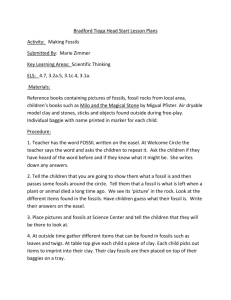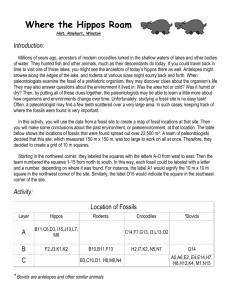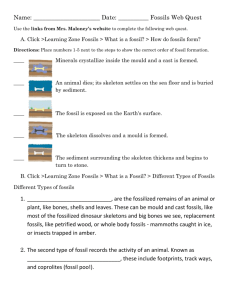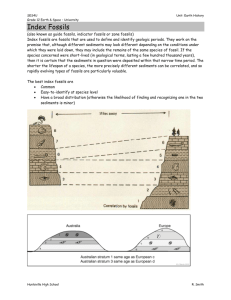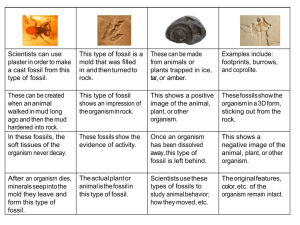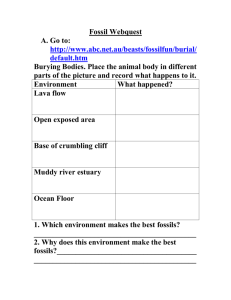Willard Boyle - Fossil Field Trip - esci-300-2013
advertisement
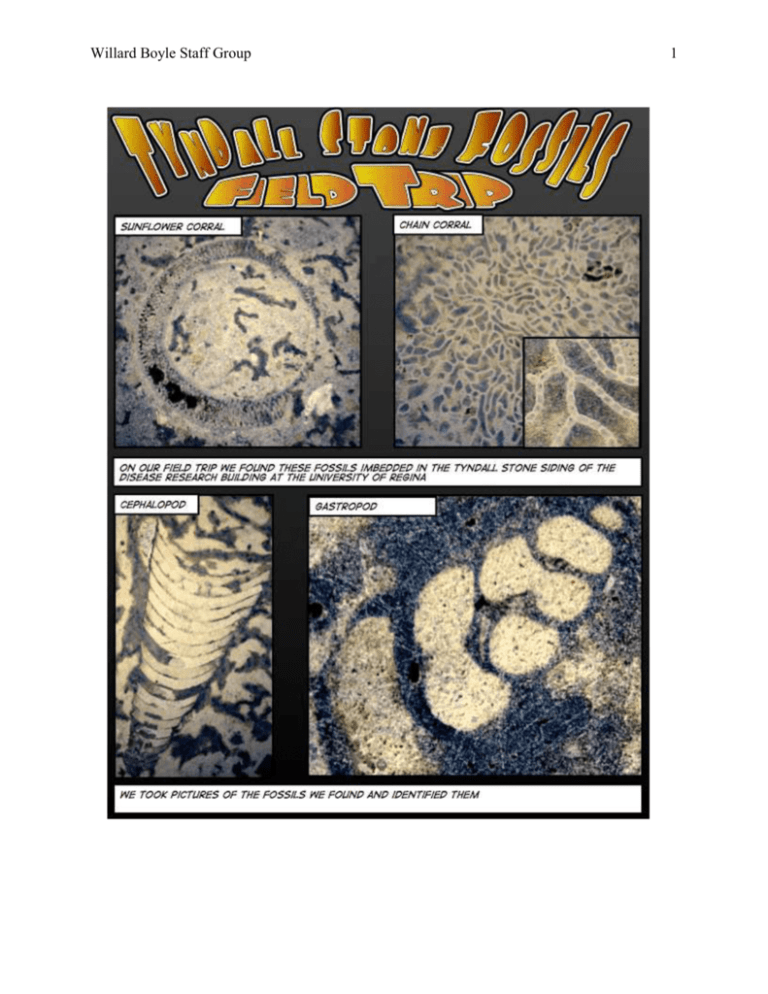
Willard Boyle Staff Group 1 Willard Boyle Staff Group 2 Curriculum Connection: This field trip meets the curriculum outcome 7.3 where students focus on the past, present, and future land uses of surface geology in Saskatchewan. An indicator that students understand this outcome is if they can explain how geologists use the fossil record to provide evidence of geological history. Learning Outcomes: 1. To be able to identify the five types of fossils found in the Tyndall stone, as well as unique characteristics of each fossil type. 2. To apply their knowledge of fossils to understanding the development of Saskatchewan’s geological history, as well as how the fossil record is used by geologists as evidence of environmental change. Three Skills/Processes: 1. Performing and Recording: When visiting the field site, the students should be able to devise a (somewhat) organized attack plan for visiting each building, and finding all types of fossils. They should be able to effectively gather evidence of the fossil’s existence by taking pictures with a digital camera. 2. Analyzing and Interpreting: Once the students gather their data, in the form of photographs, they should be able to identify each of the five fossil types. They should also be able to organize the photos in a meaningful way that is easy for the teacher and other students to interpret/understand. 3. Communication and Teamwork: The students should be able to work effectively in their small groups when in the field. The students should be able to discuss within their groups the descriptions of the fossils, so the fossils can be correctly identified. Also, this skill should be applied in the classroom when the students are analyzing and presenting their results. Questions & Expected Answers 1. What were the 5 types of fossils you identified in the Tyndall stone? List 1 or 2 distinct features of each. a. Cephalopod – long, skinny, ringed, can be coiled or spiral b. Gastropod – coiled shell c. Horned Coral – triangular shape d. Chain Coral – long skinny lines, all connected. e. Sunflower Coral – circular in shape with visible ridges 2. How did these fossils end up in the Tyndall Stone? Willard Boyle Staff Group 3 a. The organisms existed many years ago and consisted of calcareous material which show up in the fossil record. b. Once the organism died it was preserved in the sedimentary rock. c. Sedimentary rock consists of many small particles that drift down to the sea bed and over millions of years become compressed to form the rock around the organism. 3. If you were a geologist and you found these fossils, what could you infer about the environment in that time period when the organisms were living? a. The environment was likely a warm aquatic saline environment and a sudden environmental change resulted in a mass death of the species. Over time the environment evolved from a wetland to a dry region, revealing the formed limestone.


